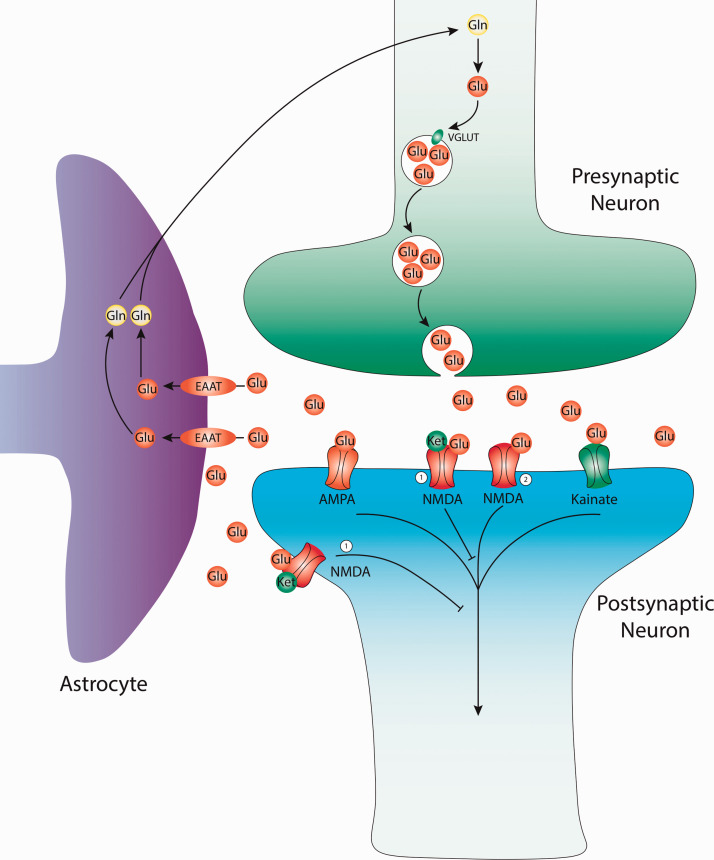Figure 1.
Glutamatergic neurotransmission and current targets for therapy. Glutamate (Glu) is derived from glutamine (GLN) in the presynaptic terminal. Alternatively, Glu can be created from the TCA cycle (not depicted). Glu molecules are then packaged into presynaptic vesicles by the vesicular glutamate transporter (VGLUT). The packaged vesicles then release their contents from the presynaptic neuron into the synaptic cleft. Within the cleft, Glu can bind various receptors including: α-amino-3-hydroxy-5-methyl-4-isoxazole propionic acid (AMPA), Kainate, and N-methyl-D-aspartate (NMDA) receptors. Glutamate can be recycled from synaptic cleft by the excitatory amino-acid transporter (EAAT) of nearby astrocyte glial cells. Within glial cells glutamate is converted to glutamine before either being used by the glial cells or reused by nearby neurons for further glutamatergic transmission. 1) NMDA antagonist, site of action for: Ketamine, Esketamine, Lanicemine, AVP-786, AXS-05, Dextromethadone, MIJ821. 2) NMDA agonist, site of action for: Rapastinel, AV-101, NRX-100/NRX-101.

